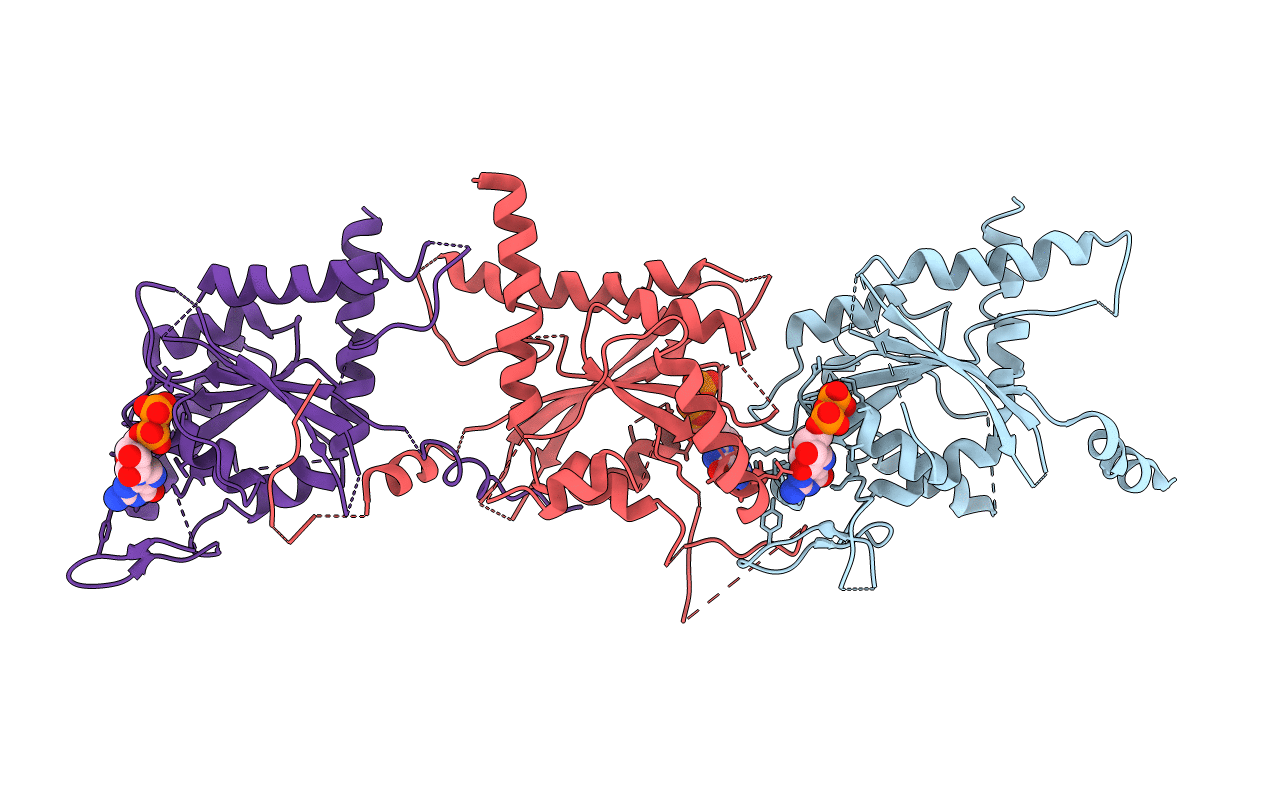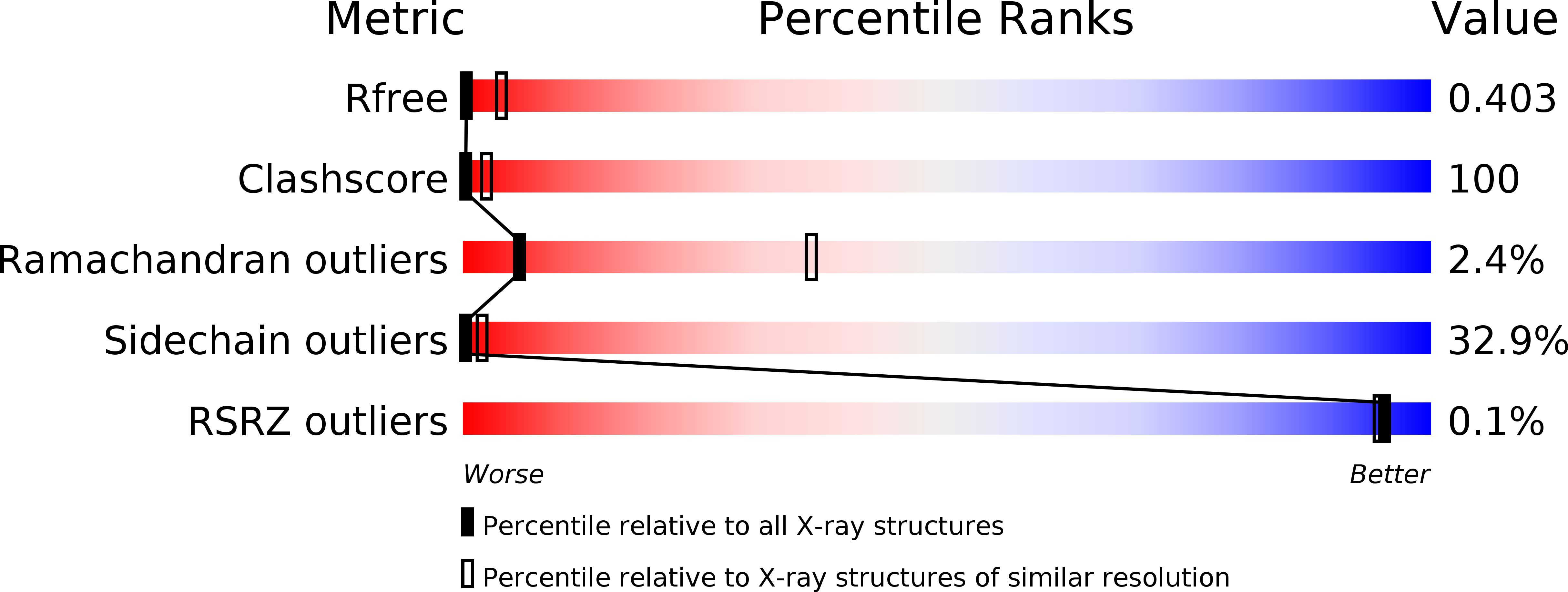
Deposition Date
2007-06-15
Release Date
2007-08-07
Last Version Date
2024-02-21
Entry Detail
PDB ID:
2QAG
Keywords:
Title:
Crystal structure of human septin trimer 2/6/7
Biological Source:
Source Organism:
Homo sapiens (Taxon ID: 9606)
Host Organism:
Method Details:
Experimental Method:
Resolution:
4.00 Å
R-Value Free:
0.39
R-Value Work:
0.37
R-Value Observed:
0.37
Space Group:
P 43 2 2


